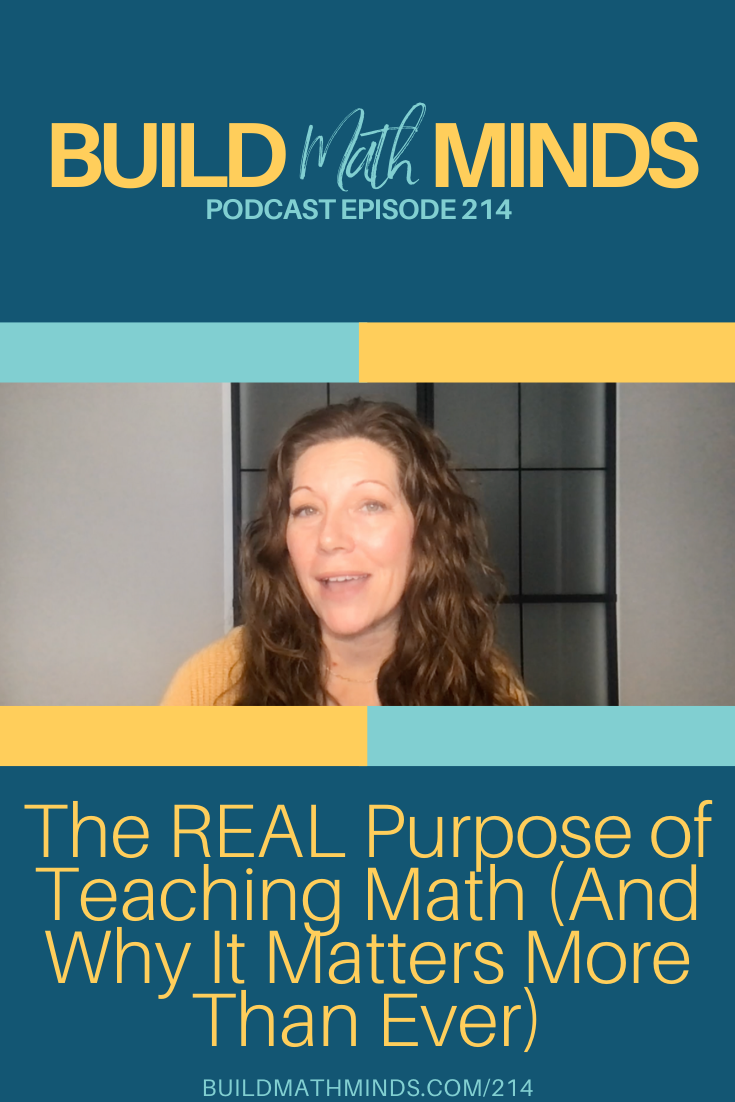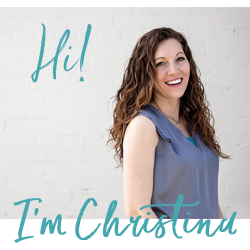Welcome fellow Recovering Traditionalists to Episode 214: The REAL Purpose of Teaching Math (And Why It Matters More Than Ever)
This week I was on a long car ride with a fellow parent on our way to watch our girls play basketball, and we started talking about her son who had been in a third-world country for a church mission. He made a comment to her that really stuck with me. He said he now saw the true purpose of education—it was to make sure that people’s brains learned how to think and process information.
He told her that so many people he interacted with just couldn’t process what we would consider normal, everyday things. Their brains hadn’t been trained to problem-solve.
Well, that got me thinking.
Here’s my question for you: When a student in your class solves 347 – 189, what are you REALLY teaching them? Is it subtraction? Or is it something way more important?
Because our students are constantly asking, “Why do I need to learn this?” Heck, WE even question it sometimes. It’s often hard to figure out a real purpose besides “because it’s in the standards.” Especially with all of the AI right now and everything else that’s out there, it is hard to justify students learning specific math skills. Will they ever use them in their life?
So I guess this episode is more to get us thinking and talking about what the real purpose of mathematics is. Is it so that students can do all the math skills that are laid out kindergarten through 12th grade once they get out of school? Or is it to build thinkers?
To me, it’s the later and that is the biggest thing we can help this current group of students with.
We don’t want students who can just DO the mathematics; we want to build thinkers, and mathematics is a way that we get to do that.
Let me give you an example of what I mean.
A calculator-student sees 25 times 4 and immediately stacks it and multiplies. They get 100. Done.
A thinking-student sees 25 times 4 and their brain goes: “Wait, 25 is a quarter. Four quarters make a dollar. Four 25s make 100.” They’ve just connected multiplication to money, to fractions, to real life. THAT’S the thinking we want.
Or think about a student who sees 99 plus 47. The calculator-student lines it up and carries the one. The thinking-student goes, “If I just borrow one from the 47 and give it to 99, I’ve got 100 plus 46, which is way easier.”
See the difference? Both get the right answer. But one is building a brain that can adapt, problem-solve, and see relationships. The other is just following steps.
So yes, our students will probably never need to do long division in their real life, but helping them build the thinking processes that their brains go through as they are learning how to divide and think about numbers and think about the best way to approach a problem—THAT is something they will use their entire lives!
Now, I know what some of you are thinking:
“Christina, I have 47 standards to cover and a test in April. I don’t have TIME to build thinkers.”
But here’s the thing—when you build thinkers, you actually SPEED UP your teaching.
Kids who think flexibly about numbers don’t need you to teach them 15 different strategies. They start SEEING the strategies themselves. They make connections YOU didn’t even plan for.
I’ve seen it happen over and over: teachers who slow down to build number sense end up getting through MORE content because kids aren’t stuck anymore. They’re not raising their hand every two minutes asking, “What do I do next?” They’re thinking. They’re problem-solving. They’re becoming independent learners.
And by the way, building thinkers doesn’t mean we abandon procedures or algorithms.
It’s not either/or. We want kids who can think flexibly AND who can execute efficiently. But if I have to choose which one comes first? Thinking wins every time.
Because a kid who can think, can learn any procedure. But a kid who only knows procedures can’t suddenly start thinking.
And that’s exactly what the basis of my course for teachers, the Flexibility Formula, is all about.
It’s about helping our students think flexibly about numbers and the operations instead of just becoming calculators and doers of the mathematics.
Because, especially now, we already have calculators and AI that can do those calculations. We need to help students become thinkers, and one way we can do that is through the way we help them learn math.
The Flexibility Formula—there’s one for PreK through 2nd grade and one for 3rd through 5th grade educators—specifically builds YOUR understanding of the 8 number sense concepts and how to help your students go from mindlessly following procedures to thinking flexibly when solving problems.
Go to BuildMathMinds.com/enroll to learn more.
Alright, my Fellow Recovering Traditionalists, I want to hear from you:
What’s ONE thing you’ve seen a student do that showed you they were THINKING about math, not just DOING math?
Drop it in the comments—I love hearing these stories. Maybe it was a kid who solved a problem in a way you never expected. Maybe it was a student who made a connection between two concepts you didn’t even realize were related. Share it with us.
And if you’re ready to learn exactly HOW to build these flexible thinkers in your classroom, check out the Flexibility Formula at BuildMathMinds.com/enroll.
Until next week, keep building math minds, not just calculators.




